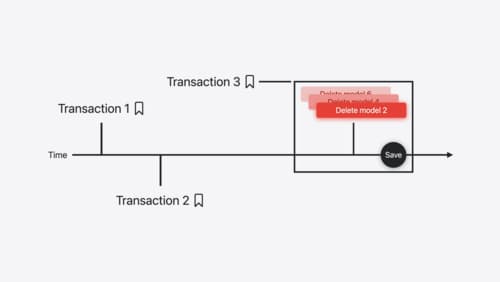Can you help me convert my models to SwiftData?
Asked on 2024-08-18
1 search
To convert your models to SwiftData, you can follow the steps outlined in the "What’s new in SwiftData" session from WWDC 2024. SwiftData is a framework that simplifies building your app's model layer and persisting it across app launches. Here's a brief guide on how to adopt SwiftData:
-
Import the Framework: Start by importing the SwiftData framework into your project.
-
Decorate Models with Macros: Use the model macro to decorate each of your models. This is a key feature of SwiftData that helps in defining your schema.
-
Model Container Modifier: Apply the model container modifier on the Window group in your app's definition. This informs the entire view hierarchy about the model.
-
Querying Data: Replace static data in your views with queries that fetch models from the model container. This allows your views to dynamically populate with data.
For more detailed guidance, you can refer to the session What’s new in SwiftData (01:01) which covers the adoption of SwiftData, including how to avoid duplicate models, set up model containers, and optimize queries.
If you are interested in creating custom data stores, you might want to check out the session Create a custom data store with SwiftData (13:00), which explains how to implement support for any persistence backend using the new datastore protocol.

Track model changes with SwiftData history
Reveal the history of your model’s changes with SwiftData! Use the history API to understand when data store changes occurred, and learn how to use this information to build features like remote server sync and out-of-process change handing in your app. We’ll also cover how you can build support for the history API into a custom data store.

What’s new in SwiftData
SwiftData makes it easy to add persistence to your app with its expressive, declarative API. Learn about refinements to SwiftData, including compound uniqueness constraints, faster queries with #Index, queries in Xcode previews, and rich predicate expressions. Join us to explore how you can use all of these features to express richer models and improve performance in your app. To discover how to build a custom data store or use the history API in SwiftData, watch “Create a custom data store with SwiftData” and “Track model changes with SwiftData history”.

Platforms State of the Union
Discover the newest advancements on Apple platforms.
